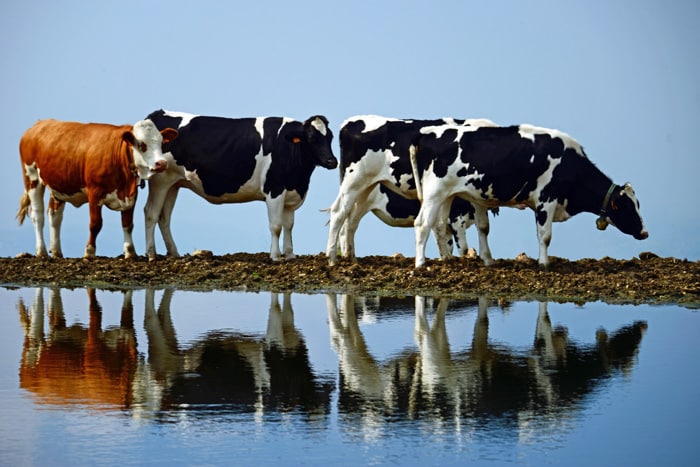Prince Edward Island farmer, and founder of North Atlantics Organics, Joe Dorgan, has found that seaweed makes cows less gassy.
Based on his research, feeding cattle seaweed can reduce greenhouse gas emissions up to 40%.
Methane gas accounts for 30% of global warming. One-third of that is from livestock pollution. So, the less gas that cows emit, the better it is for the environment (and anyone standing nearby).
Let’s put it this way: one adult cow has the potential to emit the same amount of gas as a small car. And, since the human population is increasing, the number of cows to feed them is growing too. The result? More greenhouse gas emissions.
Rob Kinley, the chief scientist of Futurefeed and a researcher who worked alongside Dorgan, said red seaweed can do even more. Based on Kinley’s research, when red seaweed was fed to livestock, it eliminated almost all their methane emissions.
According to Kinley, “We started testing seaweeds from coastal Australia, and it wasn’t long before the Asparagopsis species showed up, and it showed up in a big way. So big that we didn’t even believe what we were seeing. It took multiple runs of testing this before we believed what we were seeing, which was we couldn’t find methane anymore.”
The only challenge is harvesting it.
However, scientist Josh Goldman, the project leader at Greener Grazing, believes that harvesting seaweed may not be that hard to do.
It only takes 90 days to cultivate seaweed. This means that multiple batches can be produced each year. Plus, if farmers just place .2% of seaweed into the cow’s daily rations, they could:
A.) Save money on cow feed
B.) Be used to sell carbon credits
Practices such as this can reduce our carbon footprint and help farmers earn more money.
Right now, there are approximately 1.5 billion cows worldwide.


